
by Laura Tiu | Jan 27, 2022
February is American Heart Month and when I think of heart, my thoughts turn to seafood. Perhaps that is unusual, but I love seafood and the fact that the American Heart Association recommends 1 to 2 seafood meals a week fits right into my gastronomic plans. More seafood on your table can improve your overall health and help fight off infections.
During the recent pandemic, an increase in home cooking has resulted in a rise in seafood consumption. Consumers rediscovered frozen and canned fish, a trend that continues today. Canned tuna and fish stick consumption rose as home cooks perfected their tuna melts and fish sandwiches. Home chefs throwing fish steaks, aluminum wrapped fillets, shrimp, and even oysters on the grill have raised the bar on home-cooked meals.
Other new trends on the horizon are more innovative. How do Atlantic salmon hot dogs sound? High-end canned and jarred seafood, think canned smoked oysters, are gaining in popularity as well as being quick and easy to prepare. Nose to tail is another trend that promotes maximum utilization of the whole seafood product. Cooking fish whole or tanning fish skins for an upscale leather are new ways to enjoy seafood. Want to try something new? Sea vegetables, including kelp and other seaweed are taking the culinary world by storm because of their great taste and nutritional benefits.
Let us not forget about our furry friends. Sustainable seafood-based pet treats are gaining quite a bit of market share. Seafood has one of the lowest environmental footprints of any protein, and as such makes a great, healthy, sustainable snack for fido.
Sustainable seafood, both wild and farm-raised, is an option that is good for your heart and good for the planet. Buying sustainably harvested or raised seafood is one way you can do your part to protect the ocean and ensure plentiful seafood for the future. Make a resolution to try a new product, recipe, or cooking method during this month to celebrate a healthy heart.
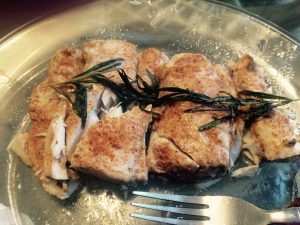
Cooked red snapper (Photo credit: L. Tiu)
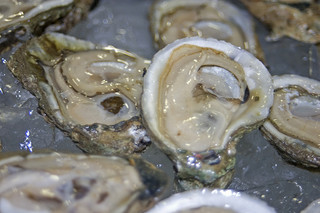
by Laura Tiu | Nov 19, 2021
There are a lot of good oyster quotes. One I remember from childhood is the saying to only eat oysters in months with the letter “r,” basically September to April. I believe this originated when all oysters came from the wild. This was a way to avoid the hot months that may have led to a watery oyster, or even food poisoning. Today, with the rise of oyster aquaculture and refrigeration, oysters can be enjoyed year-round.
The Florida Fish and Wildlife Conservation Commission recently made the tough decision to shut down wild oyster harvesting in Apalachicola, FL for up to five years in response to a struggling bay oyster population threatened by water flow issues and overharvesting. This was devastating news to an area that historically produced 90% of the state’s oysters and 10% of the nation’s. On the bright side, oyster aquaculture has been steadily growing in the area and is working hard to fill some of the gap.
A team of Florida Sea Grant Agents recently made a visit to Apalachicola to learn more about this historic oyster town and how the industry is adapting. Our first stop was Water Street Seafood, the Florida Panhandle’s largest seafood distributer. Water Street provides a wide diversity of both fresh and frozen seafood, including oysters, delivering daily in northwest Florida and shipping worldwide. We visited their oyster processing facility where we saw mesh bags of oysters brought in from Louisiana and Texas. The oysters, both farmed and wild caught, are carefully cleaned and sorted, with some going to the live, halfshell, restaurant market and some shucked onsite for the shucked market.
Next, we visited one of the many new oyster aquaculture farms in the area. Oysters farms are permitted by the state and are located in waters that have been carefully evaluated for their suitability for oyster production. Small plots are leased to the farmer allowing off-bottom production in mesh bags teathered with anchors in the shallow, productive bay waters. Oyster farmers tend to their crop by turning the bags regularly to reduce fouling of the oyster shell, and sorting by size as the oyster grows. Oysters take between eight to eighteen months to reach a harvest size.
Given the increasing demand for oysters by tourists and locals, we can thank aquaculture for keeping these tasty gems on our plates. If you are lucky enough to find some locally raised oysters on the menu, take the opportunity to try something new and support a local farmer.
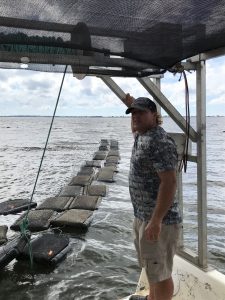
An oyster farmer visiting his lease to monitor his crop. (credit: L. Tiu)
T
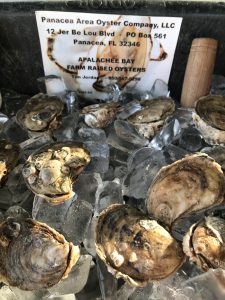
Fresh live oysters from an Apalachicola Oyster Farm (credit: L. Tiu)
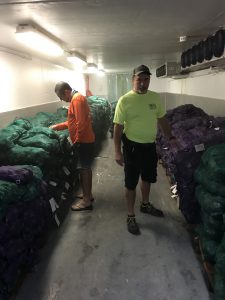
Oyster bag holding cooler at Water Street Seafood with green bags holding wild caught oysters and purple bags holding farm raised oysters. (credit: L. Tiu)
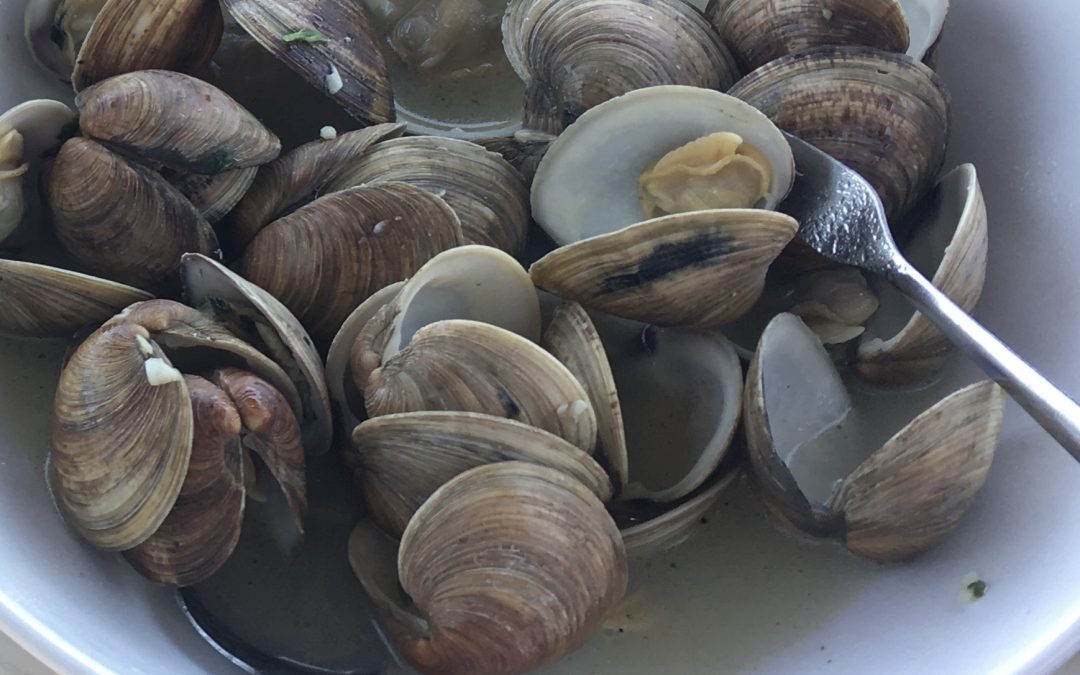
by Laura Tiu | Feb 12, 2021

Cooked red snapper (Photo credit: L. Tiu)
It’s February and for many, our thoughts turn to romance and other things that make the heart happy, like seafood! There is a strong “love” connection between consuming seafood and heart health. Fish and shellfish are low in saturated fat, high in protein and fairly easy and quick to cook. But seafood has a secret weapon in the battle for our hearts as it is considered a good source of omega-3 fatty acids. The health effects of omega-3 fatty acids have been extensively investigated, and it appears that marine fish oil lowers triglycerides, boosts HDL cholesterol, provides other cardiovascular benefits, fights inflammation, and reduces blood clot formation.
The current recommendation from the American Heart Association is 1 to 2 seafood meals, 8 ounces or more, per week be consumed to reduce the risk of congestive heart failure, coronary heart disease, ischemic stroke, and sudden cardiac death, especially when seafood replaces the intake of less healthy foods. This translates into 250 to 500 mg of omega-3 per day or 1750 to 3500 mg per week. For the past 30 years, Americans’ weekly consumption of seafood has hovered around 5 oz per week, with only 10% to 20% of U.S. consumers meeting the 8 ounces minimal federal dietary guideline.
Historically, attention has focused on wild, cold-water, fatty fish like salmon, tuna, mackerel, and sardines as sources of the most omega-3 fatty acids. However, in this case variety is a key. With a growing number of aquaculture fish and shellfish on the market it is important to note that recent studies show for some species of salmon or trout, omega-3 levels are higher in farm-raised species, due to their overall higher fat content. In other good news, many of our local Gulf of Mexico species have been shown to contain good amounts as well. This information means that fishermen and women can eat home-caught fish to get the needed omega-3 fatty acids. Gulf fish are also an excellent source of protein and other nutrients. The following Table contains the omega-3 fatty acid content of some of the most frequently consumed fish and shellfish species in the U.S. So do your heart a favor and start feeding it right.
Omega-3 Content of Frequently Consumed Seafood Products
SEAFOOD PRODUCT
|
|
OMEGA-3s PER 3 OUNCE COOKED PORTION
|
| Herring, Wild (Atlantic & Pacific) |
♥♥♥♥♥ |
>1,500 milligrams |
| Salmon, Farmed (Atlantic) |
♥♥♥♥♥ |
| Salmon, Wild (King) |
♥♥♥♥♥ |
| Mackerel, Wild (Pacific & Jack) |
♥♥♥♥♥ |
SEAFOOD PRODUCT
|
|
OMEGA-3s PER 3 OUNCE COOKED PORTION
|
| Salmon, Wild (Sockeye, Coho, Chum & Pink) |
♥♥♥ |
500 to 1,000 milligrams |
| Sardines, Canned |
♥♥♥ |
| Tuna, Canned (White Albacore) |
♥♥♥ |
| Swordfish, Wild |
♥♥♥ |
| Trout, Farmed (Rainbow) |
♥♥♥ |
| Oysters, Wild & Farmed |
♥♥♥ |
| Mussels, Wild & Farmed |
♥♥♥ |
SEAFOOD PRODUCT
|
|
OMEGA-3s PER 3 OUNCE COOKED PORTION
|
| Tuna, Canned (Light) |
♥♥ |
200 to 500 milligrams |
| Tuna, Wild (Skipjack) |
♥♥ |
| Pollock, Wild (Alaskan) |
♥♥ |
| Rockfish, Wild (Pacific) |
♥♥ |
| Clams, Wild & Farmed |
♥♥ |
| Crab, Wild (King, Dungeness & Snow) |
♥♥ |
| Lobster, Wild (Spiny) |
♥♥ |
| Snapper, Wild |
♥♥ |
| Grouper, Wild |
♥♥ |
| Flounder/Sole, Wild |
♥♥ |
| Halibut, Wild (Pacific & Atlantic) |
♥♥ |
| Ocean Perch, Wild |
♥♥ |
| Squid, Wild (Fried) |
♥♥ |
| Fish Sticks (Breaded) |
♥♥ |
SEAFOOD PRODUCT
|
|
OMEGA-3s PER 3 OUNCE COOKED PORTION
|
| Scallops, Wild |
♥ |
< 200 milligrams |
| Shrimp, Wild & Farmed |
♥ |
| Lobster, Wild (Northern) |
♥ |
| Crab, Wild (Blue) |
♥ |
| Cod, Wild |
♥ |
| Haddock, Wild |
♥ |
| Tilapia, Farmed |
♥ |
| Catfish, Farmed |
♥ |
| Mahimahi, Wild |
♥ |
| Tuna, Wild (Yellowfin) |
♥ |
| Orange Roughy, Wild |
♥ |
| Surimi Product (Imitation Crab) |
♥ |
Source: USDA National Nutrient Database for Standard Reference
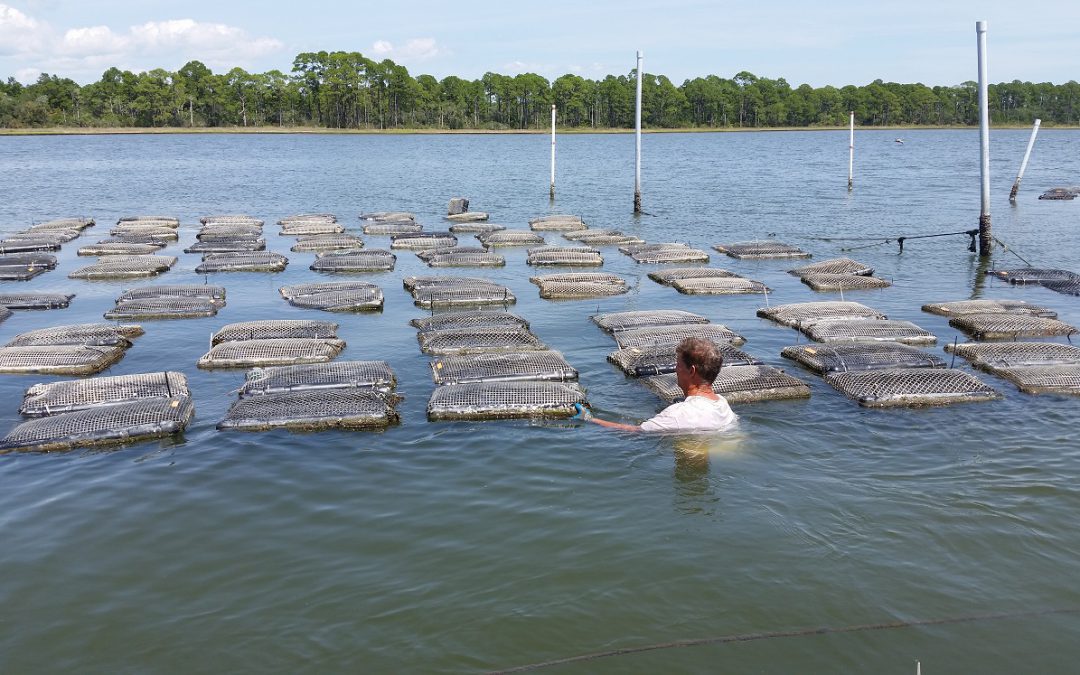
by Erik Lovestrand | Sep 25, 2020
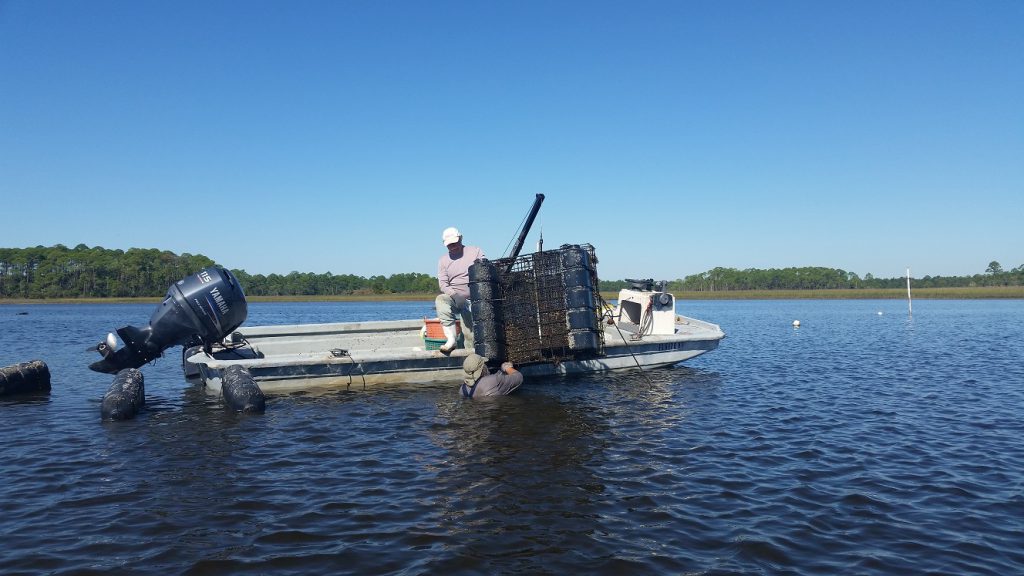
Hard work and perseverance are a must for oyster farmers.
On September 17, 2020, President Trump and US Secretary of Agriculture, Sonny Perdue, announced a second phase of an important program assisting America’s farmers. The Coronavirus Food Assistance Program (CFAP 1) was originally announced in April 2020 and now CFAP 2 will provide up to an additional $40 billion in support, along with adding more than 40 specialty crops not previously covered under CFAP 1.
This will be welcome news for many Panhandle farmers; particularly the ones that conduct their “chores” in our Panhandle bays and bayous by producing aquacultured oysters and clams. Losses in sales of molluscan shellfish were not covered under CFAP 1 because they were eligible for some assistance under the CARES Act (Coronavirus Aid, Relief, and Economic Security). However, many local growers were not able to qualify under the CARES Act for various reasons and are in serious need of assistance. When restaurants and bars were forced to close during the pandemic, sales of fresh oysters and clams basically came to a standstill overnight. Many creative efforts at direct marketing to customers and other avenues to move these time-sensitive products have been undertaken but sales are still far from what they were in 2019, leaving many growers with bills to pay and a significantly reduced bottom line.
Applications for CFAP 2 will be accepted by the USDA from September 21 through December 11, 2020. Payments will be based on 2019 sales, excepting new farmers who had no sales in 2019. Their calculations will be based on 2020 sales up to the point of application. The percent-payment-factor will be figured on a sliding scale, depending on amount of sales; ranging from 10.6% for sales below $50,000 to 8.8% for sales over $1 million.
The USDA has done a very good job of laying out information regarding the program on their website (here) and also provide assistance through their local Farm Service Agency offices around the state. Assistance with applications is available on line at this link. Two of the counties that have a significant and growing oyster aquaculture industry in the mid-Panhandle are Wakulla and Franklin. The FSA office for Wakulla County is in Monticello and can be called at (850) 997-2072 ext 2, or email Melissa Rodgers at melissa.rodgers@usda.gov. Growers in Franklin County can reach their FSA office in Blountstown at (850) 674-8388 ext 2, or email Brent Reitmeier at brent.reitmeier@usda.gov.
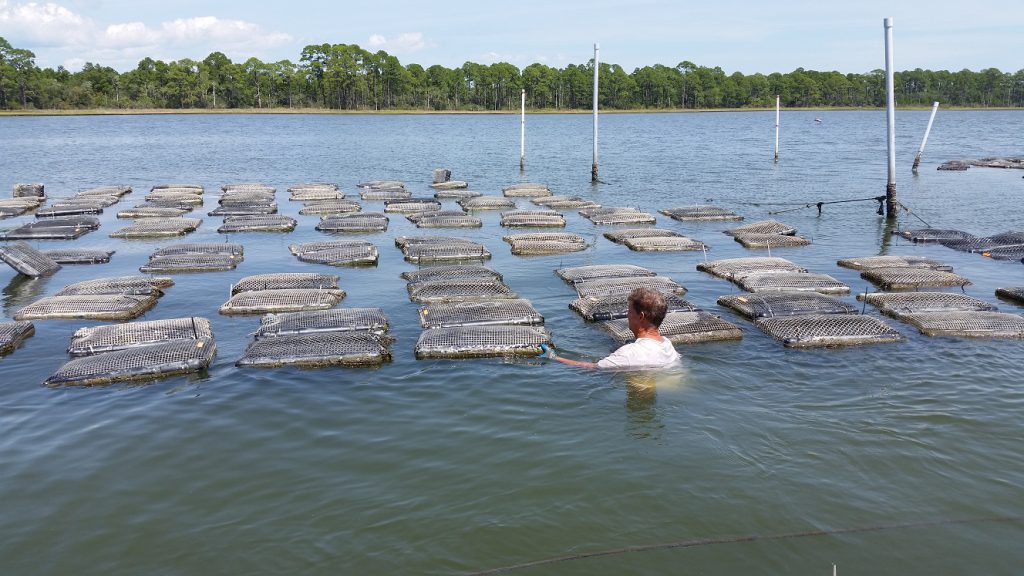
Growing oysters in floating bags requires getting wet, alot
With the plethora of confusing acronyms flying around in our present day, CFAP is one worth paying attention to. Why? Because it is providing targeted assistance to a segment of our US economy we should all stand behind. Agriculture is a critical component of all of our lives each and every day. If you have a chance to thank a farmer for what they do, or a legislator for moving this effort forward, or an industry support group that provided the data the legislator needed; don’t miss the opportunity. The hard-working men and woman who produce our food supply, including great, locally grown fresh seafood, deserve it.
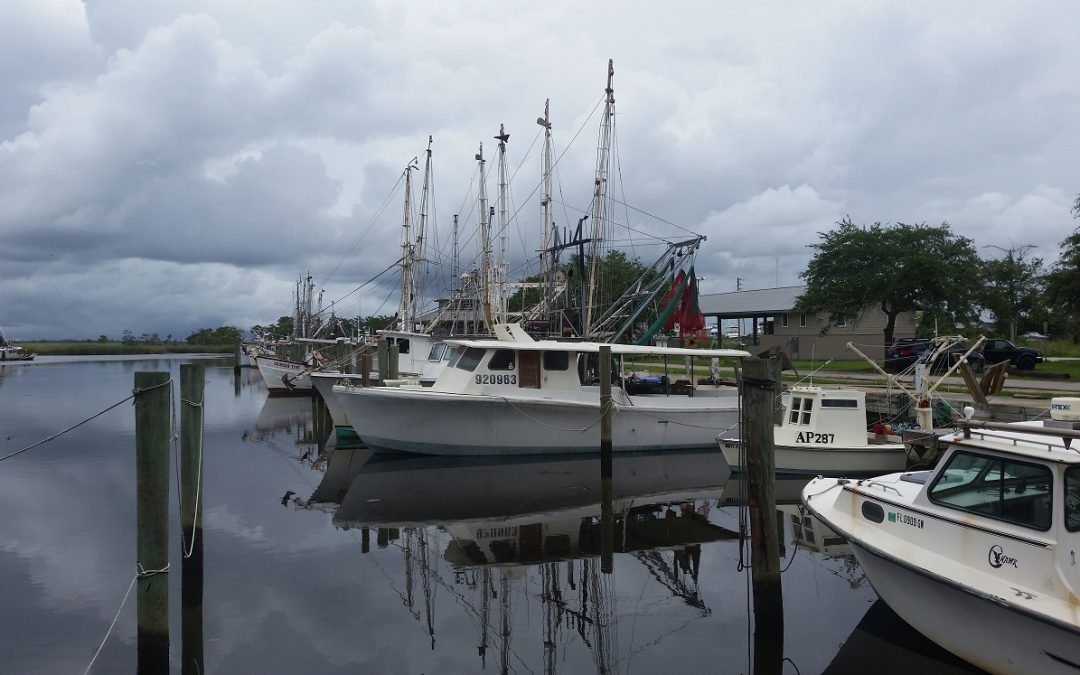
by Erik Lovestrand | Jul 31, 2020
We won’t see it tomorrow… but desperately needed funds for a hard-hit fishing industry are on the way. Congress has allocated $300 million in relief funds for losses suffered by various fishery-related businesses as a result of the COVID-19 pandemic. It comes as part of the $1.8 trillion CARES Act, which focuses on supporting businesses and individuals who have had financial losses during these difficult times.
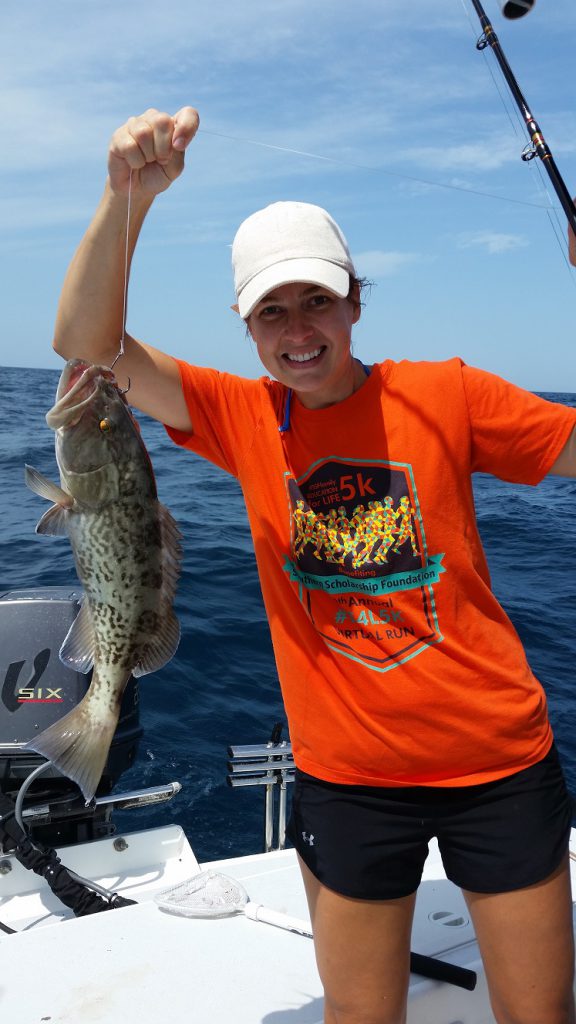
The Charter Fishing Industry was Impacted as People Stopped Travelling.
To allocate the Sec. 12005 funds, NOAA Fisheries used readily available multi-year averages to estimate the total average annual revenues from commercial fishing operations, aquaculture firms, the seafood supply chain (processors, dealers, wholesalers and distributors) and charter fishing businesses from each coastal state, Tribe, and territory. Florida’s share worked out to be $22.4 million for eligible applicants, which includes licensed commercial fishers, seafood wholesale dealers, charter fishing businesses, and aquaculture use certificate holders that are live-rock or bivalve producers. Applicants must be able to document at least a 35% loss of revenue between Jan-May 2020 as compared to the average of the previous five years during the same period.
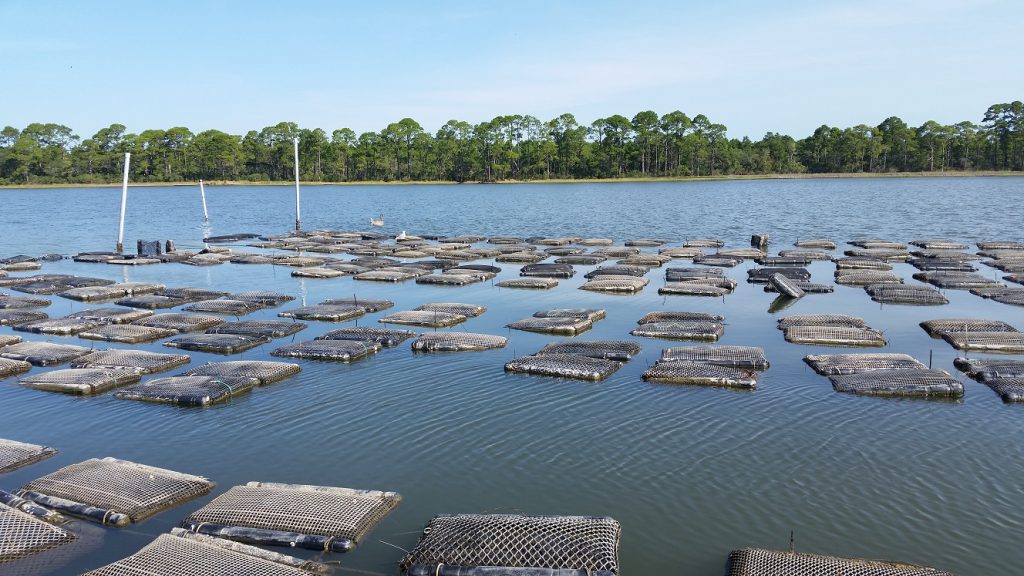
Oyster Farmers were Dramatically Impacted when Restaurants Closed.
The Florida Fish and Wildlife Conservation Commission received public input during July and will be submitting Florida’s plan for approval to NOAA in early August. After NOAA approval, the FWC will be administering the application and approval process, while the Atlantic States Marine Fisheries Commission will be sending checks directly to successful applicants. This supportive funding will be in the form of a grant and will not require repayment.
To see the FWC’s draft spending plan that will be going to NOAA click HERE. If you would like more information about the CARES Act and the FWC’s role in this effort please visit their website at this LINK. If you think you might be eligible for these funds, don’t wait for the 30 day application period to open (planned for October 2020) before doing your research on this relief funding. Go now to the FWC spending plan so you can begin preparing the documentation that will be required. With the impacts sustained from Hurricane Michael and now the virus, it is hard to imagine an industry sector in our Panhandle region that is more in need of help.
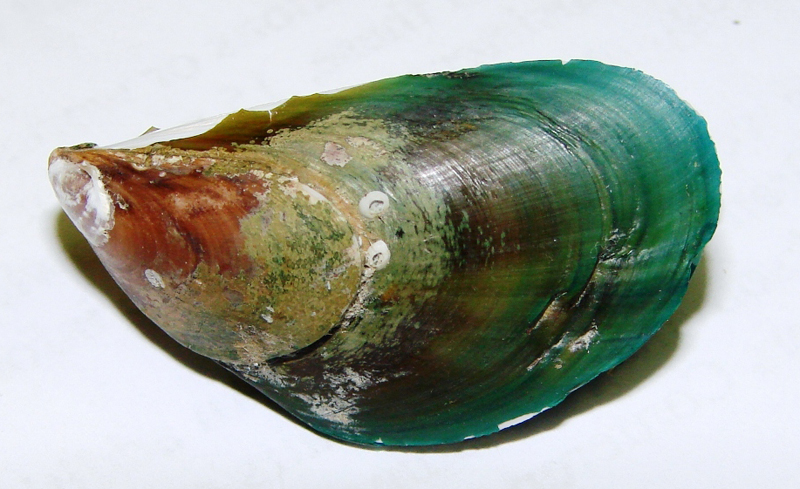
by Rick O'Connor | Jun 11, 2020
Well, maybe not…
But there could be reason to keep an eye out. We are not talking about the common ribbed or hooked mussels we found in the Pensacola Bay area. We are talking about an invasive species called the green mussel (Perna viridis).
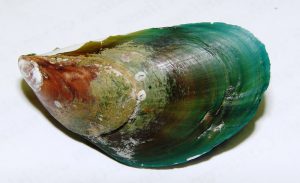
The green mussel differs from the local species by having a smooth shell and the green margin.
Photo: Maia McGuire Florida Sea Grant
Why be concerned?
By nature, invasive species can be environmentally and/or economically problematic. In this case, it is more economic – which is unusual, most are more environmental concerns. The big problem is as a fouling organism. Like zebra mussels (Dreissena polymorpha), green mussels grow in dense clusters, covering intact screens to power plants, intact pipes to water plants, and can displace native spaces by competing for space. It has been determined they can grow to densities of 9600 mussels / m2 (that’s about 10 ft2) and they can do this on local oyster reefs – displacing native, and economically important, oysters. They grow quickly, being sexually mature in just a few months, and disperse their larva via the currents. To make things more interesting, they may be host to diseases that could impact oyster health.
So, what is the situation?
They are from the Indo-Pacific region, found all across southeast Asia and into the Persian Gulf. In this part of the world they are an aquaculture product. There was interest in starting green mussel aquaculture in China, and in Trinidad-Tobago. After they arrived in Trinidad, they were discovered in Venezuela, Jamaica, and Cuba – it is not believed this was due to re-locating aquaculture, but rather by larva dispersal across the sea… they got away.
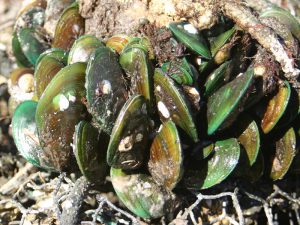
This cluster of green mussels occupies space that could be occupied by bivavles like osyters.
It would be an easy jump from Cuba to Florida – and they came. The first record was in 1999 in Tampa Bay. They were found while divers were cleaning an underwater intake screen. Dispersal could have happened via larva transport in the currents, but it could have also occurred via ship ballast discharge at the port – this is how folks think it got there, they really do not know. From there they began to spread across the peninsula part of the state. They have been reported in 19 counties, most on the Gulf coast, and there is a record from Escambia County – however, that one was not confirmed.
How would I know one if I saw it?
They prefer shallow water and are often found in the intertidal zones – attached to pilings, seawalls, rocks. As mentioned, they grow in dense clusters and should be easy to find. They are long and smooth, with a mean length of 3.5 inches. There was one found in Florida measuring 6.8 inches, which they believe is a world record. Mussels differ from oysters in that they attach using “hairy” fibrous byssal threads – in lieu of cementing themselves as oysters do. As mentioned, the shell is smooth and may have growth rings, but it lacks the “ribbed” pattern we see on the local ribbed and hooked mussel. It will have a green coloration along the margin – hence its name, and the interior of the shell will be pearly white.
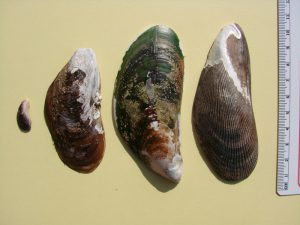
The shell at the far right is the common ribbed mussel native to our local salt marshes. Just to the left is the invasive green mussel. Can you tell them apart?
Photo: Maia McGuire Florida Sea Grant
They prefer salinities between 20-28‰, which would be the lower portions of the Pensacola Bay system (Santa Rosa Sound, Big Lagoon, maybe portions of Pensacola Bay). They are not a fan of cold water. They do not like to be in water at (or colder) than 60°F. Some biologist believe it is too cold in the panhandle for these bivalves, but we should report any we think may be them – to be sure.
What do we do if found?
1) Get a location and photos. Pull some off and get up close photos of an individual.
2) Report it. You can do this by contact the Escambia County extension office (850-475-5230 ext.111), or email me at roc1@ufl.edu.
3) If there is a method of removing all of them, do so. But this should be done only after the identification is verified. When removing try to collect all the shell material. The fertilized gametes within, if left, can still disperse the animal.
4) They are suggesting boat owners check their vessels when trailering. Avoid transporting them from one body of water to another.
5) I would recommend that marina owners do the same – check boats and pilings.
It appears the mean temperature of the Gulf is increasing. With this change it is possible some of the tropical species common in south Florida could disperse to our region, and that could include the green mussel. The most effective (and cheapest) way to manage an invasive species is catch them early and remove them before they can become established.
For more information on green mussels in Florida read https://edis.ifas.ufl.edu/pdffiles/SG/SG09400.pdf.

















